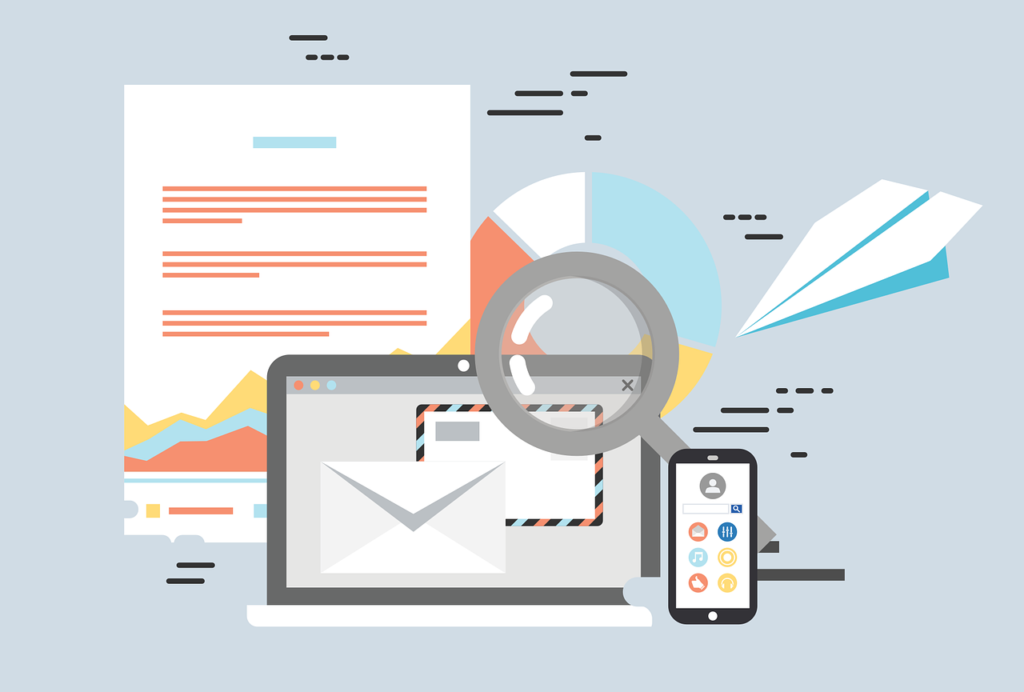Welcome to the exciting world of email marketing, where communication meets innovation!
Whether you’re a budding enthusiast just beginning your journey or an experienced marketer seeking to develop your strategies, understanding the different types of emails that can be used when you are communicating with your contacts is vital. In this article, we’ll explore the two primary email categories which you’ll work with in Mautic: marketing and transactional emails.
We will explore their purposes, significant distinctions between the two, and the importance of the changes coming with Mautic 5.0 and later, where you will be able to send transactional emails even when contacts have opted out of receiving marketing communications. So let’s embark on this adventure and unlock the wonders of email marketing together!
Unveiling the two sides: marketing and transactional emails
Marketing emails: the essence of promoting
Marketing emails serve as potent tools for businesses to connect with their audience, build brand awareness, and drive conversions. They encompass a wide range of email campaigns, including newsletters, promotional offers, product updates, and customer surveys.
The primary objective of marketing emails is to engage subscribers, nurture leads, and generate conversions. Conversions might mean purchasing something, but equally it could be signing up for an event, attending a webinar, or any other action that you want the contact to take. The important thing here is that you’re trying to promote a specific action or goal to your contact.
Transactional emails: the fundamental pillars of communication
While marketing emails focus on promotion – like the initial, exciting stages of a relationship, where attraction and curiosity are sparked – transactional emails reflect the ongoing, reliable communication and commitment that lay the foundation for a long-lasting customer relationship.
Transactional emails are generally triggered by specific interactions or transactions between the customer and the business. Examples of transactional emails might include order confirmations, shipping notifications, password resets, re-validating consent to contact and account-related updates.
Transactional emails are often personalized, and provide essential information to customers, enhancing their overall experience with your brand.
The difference between marketing and transactional emails
In summary, transactional emails differ from marketing emails in three key ways:
- Purpose: Transactional emails aim to facilitate a transaction or provide information directly related to a contact’s interaction with a business. Marketing emails, on the other hand, are designed to promote products, services, or events to the contact.
- Content: Transactional emails are typically triggered by a specific action and are personalized accordingly, containing specific details relevant to the customer’s action, such as purchase receipts or password reset links. Marketing emails often encompass a broader range of content and while there may be personalization, in general they are tailored to engage a larger audience.
- Consent: Transactional emails are considered ‘transactional’ because they do not require explicit consent from the recipient, and therefore do not need to provide an unsubscribe link. By contrast, marketing emails must comply with spam regulations, requiring recipients to provide opt-in consent to receive promotional content and be able to remove themselves from receiving such content.
Working with consent
Email marketers shoulder the responsibility of adhering to legal requirements such as the General Data Protection Regulation (GDPR) and Anti-Spam regulations. GDPR governs the protection of personal data, ensuring that individuals have control over their information and how it is used. When sending marketing emails, businesses must obtain explicit consent from recipients.
However, transactional emails are treated differently under GDPR. As they are crucial for completing a transaction or delivering vital information, they are considered a legitimate interest of both the business and the customer. Therefore, they can be sent to recipients even if they have previously opted out of marketing communications.
As a result, transactional emails typically tend to be delivered into the main inbox rather than the promotions section, for example, because they are deemed to be important and individual, rather than promotional and bulk mailed.
Transactional emails in Mautic 5.0
From Mautic 5.0 onwards, transactional emails will be sent even if the contact has opted out of email communication. They will no longer have an unsubscribe header – because it’s not relevant for a contact to unsubscribe from essential transactional emails.
To maintain compliance, it’s crucial to ensure that when you are sending transactional emails, they are primarily used to serve their intended purpose.
Marketers should limit promotional content within transactional emails to avoid blurring the lines with marketing messages, where consent is required. By providing only relevant, necessary information, you can leverage the power of transactional emails effectively as part of your marketing strategy.
If you try to send marketing emails as transactional emails – for example to circumvent landing in the Promotions tab or remove the unsubscribe options – it might work for a short while but you will eventually be flagged by your contacts as spam or caught and flagged by email providers’ systems. This can result in catastrophic damage to your deliverability, which can be extremely damaging and difficult to recover from. Don’t do it!
Understanding the potential of transactional emails
Enhancing user experience
Transactional emails offer invaluable touchpoints to build and nurture customer relationships. While marketing emails focus on the broader audience, transactional emails provide personalized interactions directly tied to a customer’s actions. By delivering exceptional transactional experiences, you foster stronger connections and amplify brand loyalty.
Seizing upselling and cross-selling opportunities:
While we have mentioned that you must be careful not to send marketing content as transactional emails, there is some leeway when it comes to including small amounts of highly relevant promotional content within a transactional email.
For example, including personalized product recommendations in a shipping confirmation email can entice customers to explore complementary items or upgrades. Leveraging transactional emails carefully and strategically allows you to maximize revenue potential while providing the all important additional value to customers.
Showcasing a consistent brand identity
Every email, whether marketing or transactional, provides a chance to showcase your brand’s identity. Consistency in design, tone, and formatting across all email types reinforces your brand image. From the logo placement to the choice of language, transactional emails should align with your brand’s essence, leaving a lasting impression on recipients.
Conclusion
As we conclude this expedition into the realm of email marketing, we’ve explored the pivotal roles played by marketing and transactional emails.
Marketing emails drive engagement and conversions, while transactional emails facilitate seamless transactions and foster customer relationships.
Understanding the nuances of transactional emails, complying with legal regulations like GDPR, and leveraging their potential for enhancing user experiences and brand loyalty will empower you on your email marketing journey.
So, embrace the power of emails, and unlock new possibilities in expanding your business horizons!
P.S. If you want some inspiration of great examples of transactional email designs, check out this blog post: https://www.brevo.com/blog/transactional-email-design-examples/



